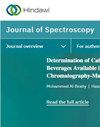利用中国玉米青贮数据集建立营养成分变化预测模型
IF 2.1
4区 化学
Q4 BIOCHEMICAL RESEARCH METHODS
引用次数: 0
摘要
重要的是要评估饲料的营养浓度,然后才能将其用于乳制品工业的巨大改进。这种改进需要一种快速、准确和便携的方法来检测营养价值,而不是传统的实验室分析。本研究采用傅里叶变换红外(ATR-FTIR)光谱技术,采用偏最小二乘回归(PLSR)和反向传播人工神经网络(BP-ANN)算法。本研究旨在研究不同地区玉米青贮饲料营养含量和瘤胃降解的差异,为预测全株玉米青贮饲料营养含量提供一种新的分析方法。选取8个不同产地的正单958品种,比较其营养成分和瘤胃降解的差异。本研究收集了分布在中国5个地区的235个奶牛场的974份WPCS样本,并建立了营养指标模型。结果表明,在不同的种植区域,WPCS的营养浓度和瘤胃降解率存在显著差异。无锡市WPCS干物质含量比济南高1.14%。兰州的中性洗涤纤维(NDF)和酸性洗涤纤维(ADF)浓度分别比济南低11.57%和8.25%。巴彦淖尔小麦的DM降解率显著高于济南小麦(6 h降解率:巴彦淖尔∶济南= 49.85%∶33.96%),6 h后瘤胃淀粉含量最高(71.79%)。结果表明,ATR-FTIR联合PLSR或BP-ANN算法均能较准确地估计出NDF、ADF和淀粉的含量(R2≥0.91)。其次是粗蛋白质(CP)、DM(0.82≤R2≤0.90)、粗脂肪(EE)和灰分(0.66≤R2≤0.81)。BP-ANN算法的预测性能优于PLSR (R2PLSR≤R2BP-ANN;rmseplsr≥rmsebp-ann)。同一品种生长在不同地区,其营养物质浓度和瘤胃降解率不同。ATR-FTIR技术结合BP-ANN算法可有效评价WPCS的CP、NDF、ADF和淀粉含量。本文章由计算机程序翻译,如有差异,请以英文原文为准。
A Dataset on Corn Silage in China Used to Establish a Prediction Model Showing Variation in Nutrient Composition
It is important to assess the nutritional concentrations of forage before it can be used for tremendous improvements in the dairy industry. This improvement requires a rapid, accurate, and portable method for detecting nutrient values, instead of traditional laboratory analysis. Fourier-transform infrared (ATR-FTIR) spectroscopy technology was applied, and partial least squares regression (PLSR) and backpropagation artificial neural network (BP-ANN) algorithms were used in the current study. The objective of this study was to estimate the discrepancy in nutritional content and rumen degradation in WPCS grown in various regions and to propose a novel analytical method for predicting the nutrient content of whole plant corn silage (WPCS). The Zhengdan 958 cultivar of WPCS was selected from eight different sites to compare the discrepancies in nutrients and rumen degradation. A total of 974 WPCS samples from 235 dairy farms scattered across five Chinese regions were collected, and nutritional indicators were modeled. As a result, substantial discrepancies in nutritional concentrations and rumen degradation of WPCS were found when they were cultivated in different growing regions. The WPCS in Wuxi showed 1.14% higher dry matter (DM) content than that in Jinan. Lanzhou had 11.57% and 8.25% lower neutral detergent fiber (NDF) and acid detergent fiber (ADF) concentrations than Jinan, respectively. The DM degradability of WPCS planted in Bayannur was considerably higher than that in Jinan (6 h degradability: Bayannur vs. Jinan = 49.85% vs. 33.96%), and the starch of WPCS from Bayannur (71.79%) was also the highest after 6 h in the rumen. The results indicated that the contents of NDF, ADF, and starch were estimated precisely based on ATR-FTIR combined with PLSR or the BP-ANN algorithm (R2 ≥ 0.91). This was followed by crude protein (CP), DM (0.82 ≤ R2 ≤ 0.90), ether extract (EE), and ash (0.66 ≤ R2 ≤ 0.81). The BP-ANN algorithm had a higher prediction performance than PLSR (R2PLSR ≤ R2BP-ANN; RMSEPLSR ≥ RMSEBP-ANN). The same WPCS cultivar grown in different regions had various nutrient concentrations and rumen degradation. ATR-FTIR technology combined with the BP-ANN algorithm could effectively evaluate the CP, NDF, ADF, and starch contents of WPCS.
求助全文
通过发布文献求助,成功后即可免费获取论文全文。
去求助
来源期刊

Journal of Spectroscopy
BIOCHEMICAL RESEARCH METHODS-SPECTROSCOPY
CiteScore
3.00
自引率
0.00%
发文量
37
审稿时长
15 weeks
期刊介绍:
Journal of Spectroscopy (formerly titled Spectroscopy: An International Journal) is a peer-reviewed, open access journal that publishes original research articles as well as review articles in all areas of spectroscopy.
 求助内容:
求助内容: 应助结果提醒方式:
应助结果提醒方式:


